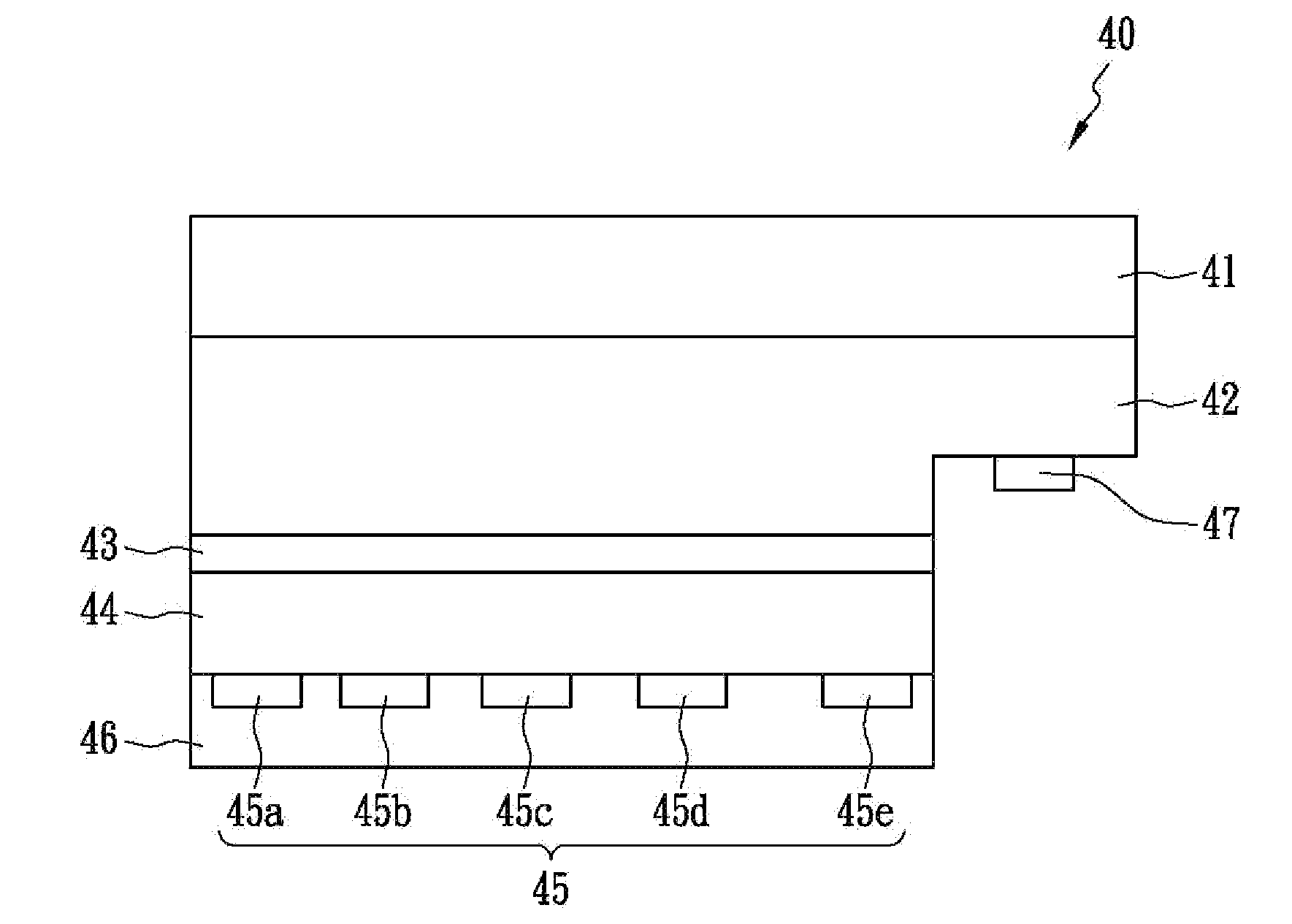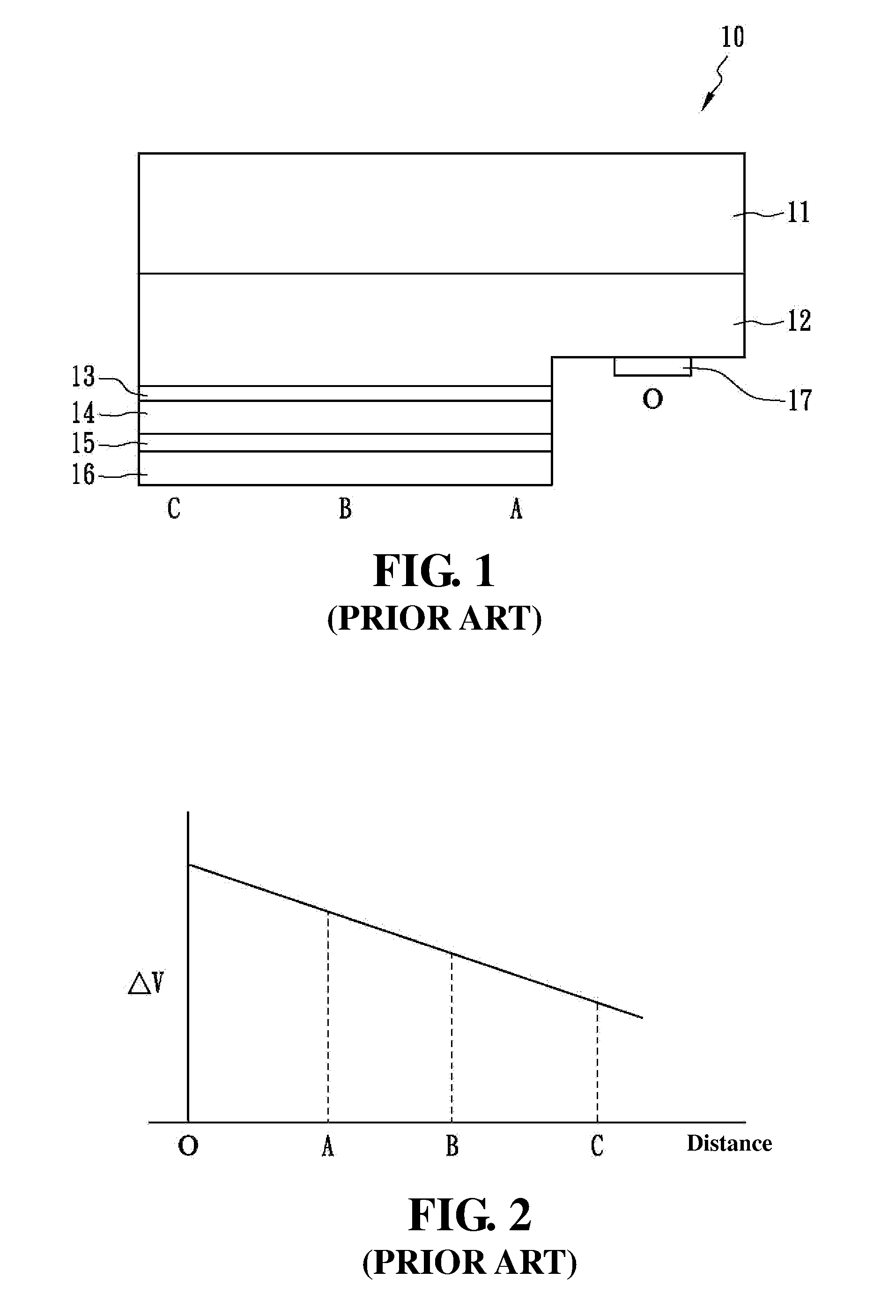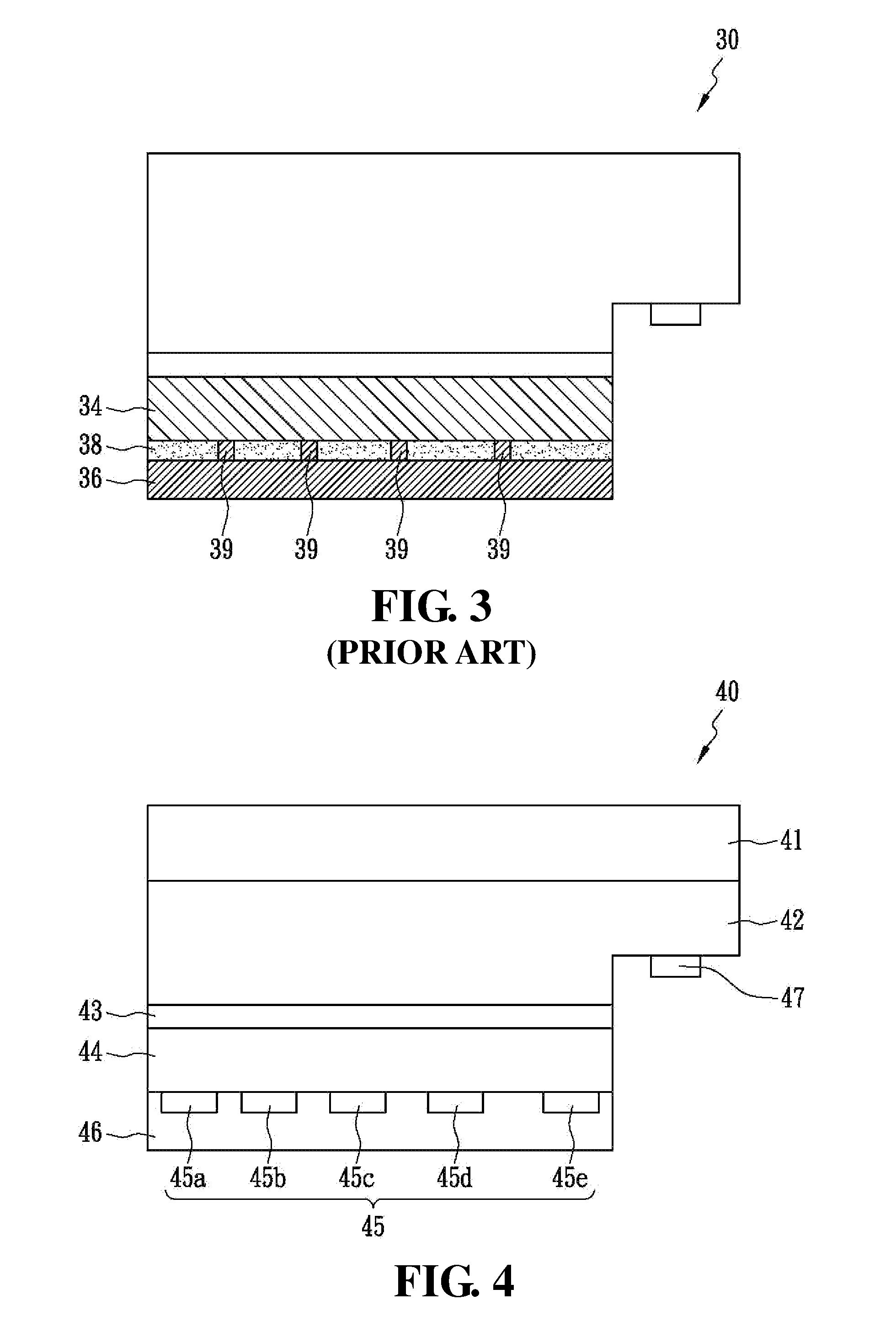Semiconductor light-emitting device
a technology of semiconductors and light-emitting devices, which is applied in the direction of semiconductor devices, basic electric elements, electrical equipment, etc., can solve the problems of poor light reflectivity of materials commonly used for p-type semiconductor layers, and reducing the reflective effect of light, so as to achieve good ohmic contact, good ohmic contact, and high reflectivity
- Summary
- Abstract
- Description
- Claims
- Application Information
AI Technical Summary
Benefits of technology
Problems solved by technology
Method used
Image
Examples
Embodiment Construction
[0038]FIG. 4 is the cross-sectional diagram of the semiconductor light-emitting device of the present invention. An N-type semiconductor layer 42, an active layer 43, a P-type semiconductor layer 44, an ohmic contact layer 45, and a reflective layer 46 are sequentially formed on the sapphire substrate 41, and an N-type electrode 47 is formed on the exposed N-type semiconductor layer 42. The intervals between each ohmic contact block in blocks 45a to 45e on the ohmic contact layer 45 increase accordingly. By controlling the intervals between the ohmic contact blocks 45a to 45e and the distances of those blocks to the N-type electrode 47, one can compensate for the non-uniform potential distribution in the light-emitting structure caused by accumulated resistance in the N-type semiconductor layer 42, and subsequently create uniform current distribution in the light-emitting structure. The ohmic contact block 45 is formed through deposition of Ni / Au, Ni, Au, Rh, Pb, Pt, ITO, or IZO, an...
PUM
 Login to View More
Login to View More Abstract
Description
Claims
Application Information
 Login to View More
Login to View More - R&D
- Intellectual Property
- Life Sciences
- Materials
- Tech Scout
- Unparalleled Data Quality
- Higher Quality Content
- 60% Fewer Hallucinations
Browse by: Latest US Patents, China's latest patents, Technical Efficacy Thesaurus, Application Domain, Technology Topic, Popular Technical Reports.
© 2025 PatSnap. All rights reserved.Legal|Privacy policy|Modern Slavery Act Transparency Statement|Sitemap|About US| Contact US: help@patsnap.com



